S'sonic
Stealth
Menu
A free template by Lucknowwebs.com for WYSIWYG WebBuilder 8
Nigel G Wilcox
Powered by Sispro1-S
Paragon Of Space Publication
© Copyright Reserved - United Kingdom
Ideal Screen Composition 1024 x 768
SITEMAP
PSEUDO SCIENCE
SCIENCE RESEARCH
ABOUT
Desk
Supersonic
Stealth
Study
Menu
MAIN INDEX
Fastest Air Planes
Space
Transport
Menu
F-14B/D Tomcat
The F-14D(R) Tomcat is a supersonic, twin-engine, variable sweep-wing, two-place strike fighter manufactured by Grumman Aircraft Corporation. The multiple tasks of navigation, target acquisition, electronic counter measures (ECM), and weapons employment are divided between the pilot and the radar intercept officer (RIO). Primary missions include precision strike against ground targets, air superiority, and fleet air defense.
As a Strike Fighter, the Tomcat is capable of deploying an assortment of air-to-ground ordnance (MK-80 series GP bombs, LGBs and JDAM) in various configurations, while simultaneously carrying the AIM-7, AIM-9 and AIM-54 air-to-air missiles. The F-14D also has the LANTIRN targeting system that allows delivery of various laser-guided bombs for precision strikes in air-to-ground combat missions and for battle damage assessment. With its Fast Tactical Imagery (FTI) system the F-14 can transmit and receive targeting/reconnaissance imagery in-flight to provide time sensitive strike capability. This F-14D is also capable of carrying the Tactical Air Reconnaissance Pod System (TARPS) providing in-theater tactical reconnaissance.
The National Air and Space Museum's Tomcat (BuNo. 159610) was built as an F-14A-85-GR and was one of the few Tomcats that was modified as an F-14D(R) in the early 1990s. It is credited with one MiG kill which was earned on January 4, 1989, near the coast of Libya.
On January 4, 1989, near the Libyan coast, Two VF-32 F-14As flying CAP from the USS John F. Kennedy (CV-67) are alerted to a pair of Libyan Mikoyan-Gurevich MiG-23 Floggers. The MiG-23s had taken off from Al Bumbaw Airfield near Tobruk. The F-14s locked the MiGs with their powerful AWG-9 radar. Normally such a radar lock resulted in the MiGs retreating back to Libya--not this time. The Tomcats were threatened by the AA-7 Apex missile-carrying Floggers and were cleared to engage the MiGs. During a lengthy six- to eight-minute air battle, the MiGs continued to threaten the Tomcats and finally, after several attempts to evade the MiG radar threat, the incoming pair of MiG-23s were declared hostile and the F-14 crews were cleared to engage. The crew of the lead F-14A, AC202 fired an AIM-7 Sparrow missile which did not strike its target, while the second F-14A's, AC207 (BuNo. 159610) AIM-7 found its target destroying one of the MiG-23s. The lead F-14 re-engaged the remaining MiG-23 firing an AIM-9 Sidewinder heat-seeking missile that detonated in the tailpipe of the Flogger. Both MiG pilots ejected safely from their destroyed aircraft.
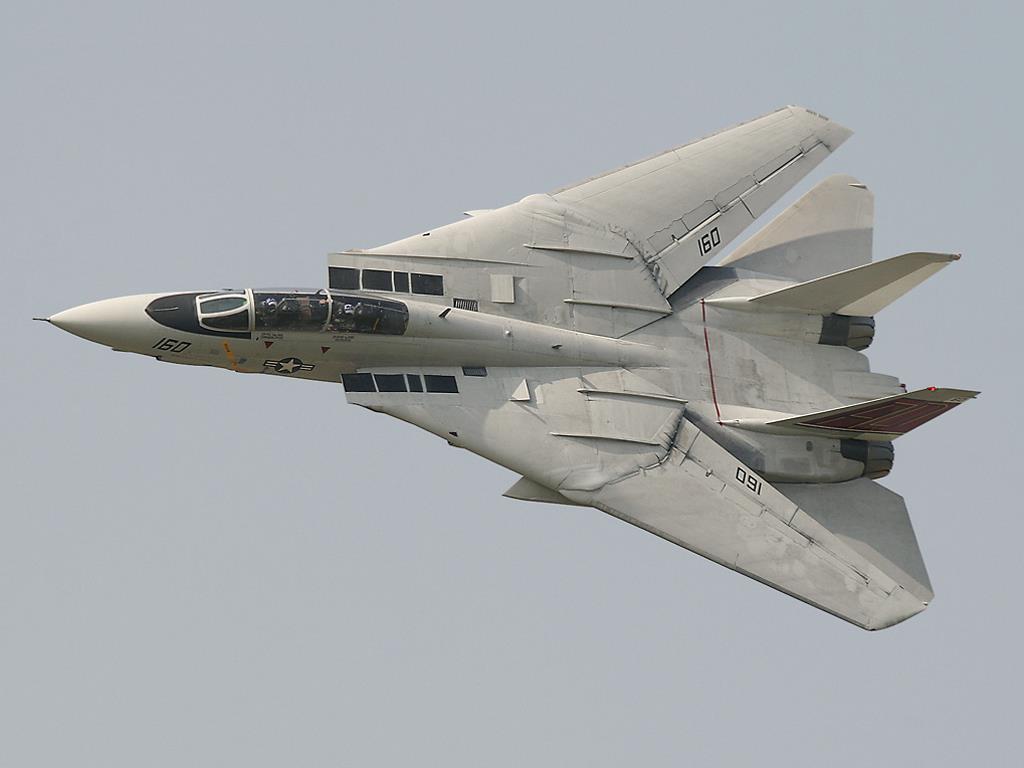
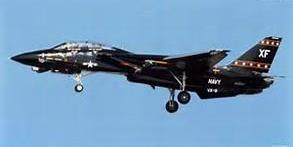
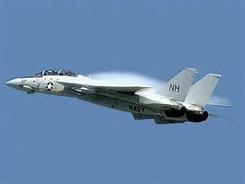
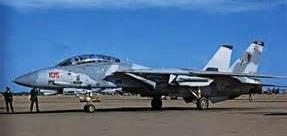
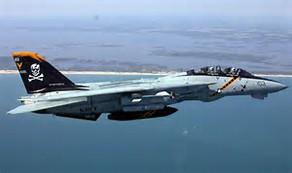
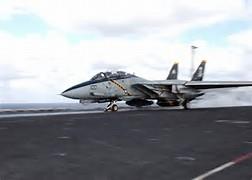
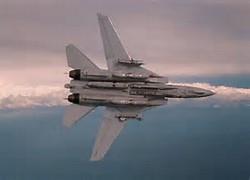
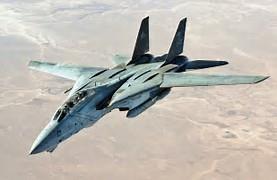

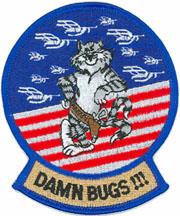
F-14 Squadrons 1970 - 2006
On this page you will find some specifications of the different F-14 variants that were produced since the Tomcat was born ... Between 1969 and 1992 Grumman produced some 710 F-14s all in all with the last one being an F-14D on 20 July 1992. One F-14 variant is not specified below, the original F-14B with its Pratt & Whittney 401 engines.
Note that the specifications given on speed, altitude and weight resemble only the design spcifications. These are less than the maximum possible to keep airframe fatigue low. Also this is the case with the maximum allowed g-force load which is limited in peace-time operations.
Type F-14A F-14B (F-14A+) F-14D
First Flight 21 Dec 1970 Sept 1986 Mar 1990
Wingspan (unswept) 64 ft 1.5 in 64 ft 1.5 in 64 ft 1.5 in
Wingspan (swept) 38 ft 2.5 in 38 ft 2.5 in 38 ft 2.5 in
Length 62 ft 8 in 62 ft 8 in 62 ft 8 in
Height 16 ft 16 ft 16 ft
Wing Area 565 sqft 565 sqft 565 sqft
Empty Weight 40,104 pounds 41,780 pounds 43,735 pounds
Max. Weight 72,000 pounds 74,349 pounds 74,349 pounds
Powerplants 2 P&W TF-30-P-414A 2 GE F-110-GE-400 2 GE F-110-GE-400
Max. Thrust 34,154 lbs 56,400 lbs 56,400 lbs
Wing Loading 92 psf 94 psf 96 psf
Max. Speed 1,544 mph 1,544 mph 1,544 mph
Mach 2.38 Mach 2.38 Mach 2.38
Ceiling 50,000+ ft 53,000+ ft 53,000+ ft
Range 1,730 nm 2,050 nm 2,050 nm
The Grumman F-14 Tomcat is an American supersonic, twin-engine, two-seat, variable-sweep wing fighter aircraft. The Tomcat was developed for the United States Navy's Naval Fighter Experimental (VFX) program after the collapse of the F-111B project. The F-14 was the first of the American teen-series fighters, which were designed incorporating air combat experience against MiG fighters during the Vietnam War.
The F-14 first flew in December 1970 and made its first deployment in 1974 with the U.S. Navy aboard USS Enterprise (CVN-65), replacing the McDonnell Douglas F-4 Phantom II. The F-14 served as the U.S. Navy's primary maritime air superiority fighter, fleet defense interceptor, and tactical aerial reconnaissance platform into the 1990s. The Low Altitude Navigation and Targeting Infrared for Night (LANTIRN) pod system were added in the 1990s and the Tomcat began performing precision ground-attack missions.
In the 1980s F-14s were used as land-based interceptors by the Islamic Republic of Iran Air Force during the Iran-Iraq War, where they saw combat against Iraqi warplanes. Iranian F-14s reportedly shot down at least 160 Iraqi aircraft during the war, while only 12 to 16 Tomcats were lost; at least half of these losses were due to accidents.
The Tomcat was retired from the U.S. Navy's active fleet on 22 September 2006, having been supplanted by the Boeing F/A-18E/F Super Hornet. The F-14 remains in service with the Islamic Republic of Iran Air Force, having been exported to Iran in 1976.
Primary users: United States Navy (historical)
Imperial Iranian Air Force (historical)
Islamic Republic of Iran Air Force
Manufacturer: Grumman Aerospace Corporation
First flight: 21 December 1970
Introduction: 22 September 1974
Retired: 22 September 2006 (United States Navy)
Status: In service with the Islamic Republic of Iran Air Force
Produced: 1969-1991
Number built : 712 Unit cost
Cost: US$38 million (1998)














